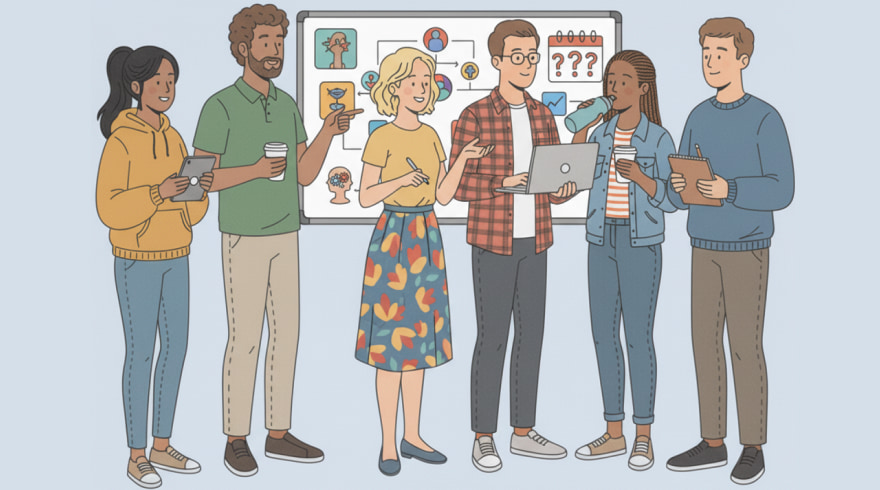Comprehensive Guide to the RAADS‑R Adult Autism Self‑Assessment
- 30 October 2025

What the RAADS-R Measures and Why It Matters
The Ritvo Autism Asperger Diagnostic Scale–Revised is a rigorously researched self‑report questionnaire designed to identify longstanding autistic traits in adults. Unlike quick quizzes that spotlight only a narrow slice of behavior, this instrument spans a wide constellation of experiences: social reciprocity, sensory modulation, communication history, and circumscribed interests. The emphasis on adulthood is crucial, because many people reach their twenties or thirties before recognizing consistent patterns that trace back to childhood. By cataloging how frequently and how early specific traits appeared, the tool helps users reflect on a lifetime arc rather than a single moment in time.
Built around detailed statements and a gradation of agreement choices, the scale surfaces nuances that shorter screeners often miss. Items probe subtle pragmatic language issues, masked social exhaustion, and repetitive mental routines that can be easy to overlook in everyday life. It can be taken independently, though many find it helpful to discuss results with a clinician, mentor, or trusted peer to add context. This reflective process is as valuable as the final score because it encourages self‑understanding, pattern recognition, and more effective self‑advocacy.
Used responsibly, the assessment is best seen as a structured mirror rather than a verdict. A thoughtful reading of outcomes can guide next steps: seeking a formal evaluation, initiating workplace accommodations, joining neurodiversity‑affirming communities, or simply tracking strategies that make daily life more manageable. For readers who prefer an evidence‑aware approach, the scale’s origins in peer‑reviewed research provide an added layer of credibility, while its domain breakdown clarifies which areas may warrant deeper exploration.
Benefits of No‑cost Screening and the User Experience
Cost should not be a barrier to self‑discovery, and that’s where complimentary screening options shine. A free pathway lets curious adults explore patterns without financial pressure, encourages early reflection, and can reduce the inertia that often delays care. The convenience of self‑paced completion also supports people who need more time to process complex questions, minimizing time constraints and decision fatigue. Many users appreciate taking the assessment in a calm, sensory‑friendly environment at home, which can yield more accurate and thoughtful answers.
For budget‑conscious learners and late‑identified adults, access to the RAADS autism test free pathway lowers barriers to reflection and encourages timely self‑assessment. Beyond saving money, no‑cost availability democratizes insight by reaching students, job‑seekers, caregivers, and individuals in regions with limited services. It can be the first step toward understanding strengths, challenges, and support needs, especially for those who’ve navigated life with compensatory strategies or camouflaging.
Consider these practical advantages:
- Risk‑free experimentation with structured self‑inquiry before pursuing formal evaluation.
- Reduced anxiety thanks to private, at‑home completion and flexible timing.
- Accessible reflection for people with variable energy, attention, or sensory thresholds.
- Immediate feedback that can inform journaling, therapy goals, or conversations with loved ones.
While free access is empowering, it’s still important to verify that the scoring logic mirrors the original research, results are delivered transparently, and your data isn’t repurposed. When those conditions are met, a complimentary screener becomes a meaningful gateway to self‑knowledge.
How to Prepare, Take, and Interpret the RAADS-R Responsibly
Preparation enhances the quality of your responses and the usefulness of your results. Start by choosing a distraction‑free space where you won’t feel rushed. If possible, skim an overview of the scale’s domains so you know what types of experiences will be queried. Bring a notepad to jot down memories from school, family events, or early jobs that illustrate the trait being asked about. Concrete examples help prevent overly general answers. Some people find it helpful to ask a long‑time friend or relative for historical perspective, especially on childhood communication or play patterns.
When you take the assessment, answer with your typical experience rather than how you wish things worked. If your current strategies mask a trait, reflect on how things felt before you developed those strategies. After completion, read the score report with nuance. A high total or strong domain clusters are signals to consider, not labels. You might review your notes, mark the items that resonated most, and plan follow‑up steps such as talking with a clinician, exploring workplace accommodations, or connecting with peer groups.
| Domain | What it explores | Helpful reflection tip |
|---|---|---|
| Social relatedness | Reciprocity, friendship maintenance, intuitive social cues | Recall school or early work settings where social flow felt easy or effortful. |
| Language and communication | Literal interpretation, prosody, pragmatic nuances | Note examples of misunderstanding jokes, subtext, or indirect requests. |
| Sensory‑motor | Over/under‑responsivity to sound, light, touch; coordination | Track recurring triggers and soothing inputs across seasons and settings. |
| Circumscribed interests | Intensity, focus, and pattern‑seeking tendencies | Differentiate energizing deep dives from rumination that impedes daily tasks. |
Finally, keep perspective. A screener is an entry point that can inform next steps but does not replace a comprehensive evaluation. Your lived experience, goals, and supports matter just as much as numbers on a page. If results spark questions, jot them down to bring to a professional who understands neurodiversity‑affirming care.
Advantages and Limitations Compared with Other Screeners
The RAADS-R offers depth across multiple life domains, which sets it apart from brief instruments that emphasize current behavior only. That breadth captures both obvious and subtle manifestations, including historic communication patterns and long‑standing sensory differences. For many adults, especially those who masked through school or work, the longitudinal lens can illuminate why certain environments drain energy while others feel naturally compatible.
Still, every instrument has constraints. Self‑report formats rely on accurate recall and insight, which can be skewed by masking, trauma, or cultural socialization. Some items may read differently across cultures, genders, or neurotypes, and literal phrasing can influence interpretation. People with co‑occurring conditions such as ADHD, anxiety, or OCD may also endorse items for overlapping reasons, complicating the picture. That is why results are best integrated with narrative context and, when possible, a knowledgeable clinician’s assessment.
When choosing a tool, consider what you need most:
- Historical context across childhood and adulthood, rather than a snapshot of this month.
- Coverage of communication nuance and sensory experience alongside social dynamics.
- Transparency about scoring thresholds and how interpretations are framed.
- Clear guidance on next steps that respect autonomy and individual goals.
For some, a shorter preliminary screener is useful as a quick check; for others, the deeper domain breakdown of this assessment provides clarity that aligns better with lived experience. The ideal path can involve both: a broad, reflective self‑assessment paired with targeted follow‑up and personal experimentation with supports.
Finding Reputable Platforms and Protecting Your Privacy
Not all online versions are equal, so vet the provider before entering sensitive information. Look for clear attributions to the original research, unchanged item wording, and scoring that matches the validated approach. A trustworthy site explains how it stores or discards responses, uses secure connections, and avoids selling data. Accessibility matters, too: readable typography, keyboard navigation, dark‑mode options, and mobile‑friendly layouts reduce friction and help you answer accurately.
When evaluating providers, you might encounter platforms offering the RAADS r autism test online free option, and you should confirm privacy and scoring accuracy. Beyond privacy, check whether the report includes domain‑level insights, links to credible resources, and cautions about self‑diagnosis. These elements signal an intent to inform rather than sensationalize. If you plan to discuss results with a clinician, choose a version that lets you download or print responses so your qualitative notes travel with the numbers.
Here’s a quick vetting checklist:
- Security: HTTPS, clear data retention policy, and no compulsory account sign‑up.
- Fidelity: Original wording, valid scoring thresholds, and transparent interpretation.
- Usability: Adjustable contrast, legible fonts, and stable navigation for assistive tech.
- Support: Contextual guidance, resource links, and anti‑stigmatizing language.
If any element feels opaque, especially data use, choose a different platform. Your autonomy and privacy are non‑negotiable, and reputable hosts make that obvious.
FAQ: Common Questions About the RAADS-R
Is this assessment a diagnosis?
No. It is a screening tool intended to surface patterns that may align with autistic traits. A formal diagnosis requires a comprehensive evaluation by a qualified professional who synthesizes interviews, history, collateral input, and standardized measures. Use the results as a springboard for informed conversations and next steps.
What score suggests I should seek a professional evaluation?
Higher totals and strong clusters in specific domains can indicate that a full assessment may be worthwhile. However, thresholds are guides rather than absolutes. If the statements resonate deeply with your lived experience, regardless of the exact number, consider consulting a clinician for individualized guidance.
How long does it take to complete?
Most adults finish in 20–40 minutes, depending on reading speed and reflection time. If certain items stir memories, taking brief breaks can improve accuracy. It’s better to answer thoughtfully than to rush; pacing supports clearer self‑observation and more meaningful results.
Should I answer based on childhood, current life, or both?
Both. The instrument values lifespan perspective and invites you to consider how traits appeared in childhood and how they present now. If you’ve developed masking strategies, note earlier experiences alongside your current coping methods to capture the full picture.
What should I do after getting my results?
Document the items that resonated most, then explore supports that align with your goals: workplace or academic accommodations, sensory‑friendly adjustments, skill‑building strategies, or peer communities. If you want diagnostic clarity, bring your results and notes to a professional who practices neurodiversity‑affirming care.
Latest News
-
![Comprehensive Guide to Online Digital Autism Screeners]()
- 5 November, 2025
-
![Free Adult Autism Screening: A Practical Guide to Understanding and Next Steps]()
- 4 November, 2025
-
![Adult Autism Self-Assessment Guide: Online Screenings, Benefits, and Next Steps]()
- 3 November, 2025



